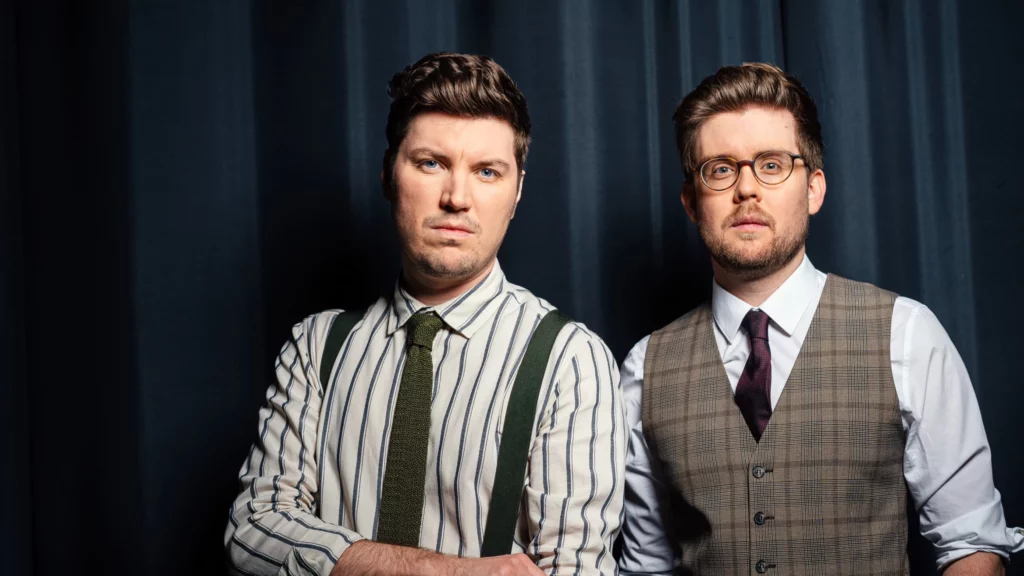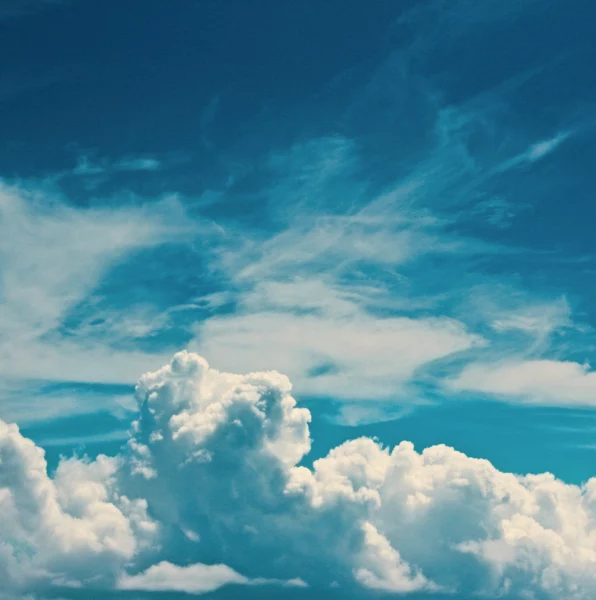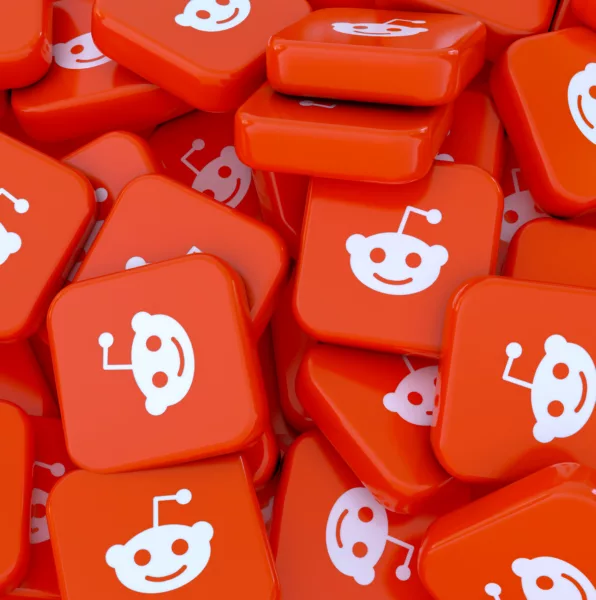Making the invisible visible, not only under the microscope – The project “Microscope Me Up” by Chiara di Ponzio and Francesca Miricola aims to increase the visibility of science and creates an inclusive space celebrating societal diversity. An interview about a special symbiosis between microscopy and makeup art.
“Diversity makes things better“
Mrs. Miricola and Mrs. Di Ponzio, what’s the idea behind your project “Microscope Me Up”?
Chiara Di Ponzio: We see ourselves as connectors between the different worlds of science and makeup. For this, we take a microscopy picture from a scientist and send it to a makeup artist. The artist creates a look inspired by the microscopy image. We don’t set any rules. They can express themselves based on whatever the picture might tell them. Some take it very serious and get invested in a full body makeup, it can take several weeks from the first inspiration to the final shot. Others focus on lips or on a single eye. We then receive an image of the final makeup and combine it with the original microscopy image for a social media post.
Francesca Miricola: The topic of the post is based on the description of the microscopy image provided by the scientist. We try to create a post that is not too long and uses very simple language. The goal of the page is to make science as accessible as possible, so people can appreciate and understand the topic no matter whether they have a scientific background or not.
Sieh dir diesen Beitrag auf Instagram an
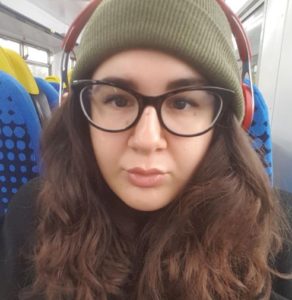
Miricola: Chiara and I have two things in common: we are very passionate about science and we absolutely love makeup. At the beginning of 2019, we both noticed that science is not very accessible to people outside of academia and decided to start a science communication project. We also found it problematic that makeup artists are often underestimated and not valued as actual artists. So, we wanted to combine science and makeup to tackle both of the problems at the same time. Clearly, we don’t do it for money, we invest our personal free time. For us it’s about having fun and building a community.
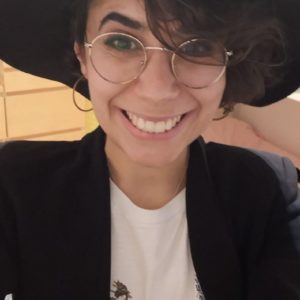
Di Ponzio: We had the idea to make science as much fun for other people, as it is for us. Having a scientific background, we are sensitized to the fact that science is everywhere around us, which is super fascinating. But by being exposed to science all the time while studying or at work, we somehow got used to that fascination and lost the sense of value for science. By bringing science into other people’s lives, we made it fun and exciting for ourselves again.
Which social media platforms do you use for your project?
Miricola: Actively, we use Instagram and Twitter. We try to be present on any social media platform, so people can find and contact us anywhere. A bit like an anchor for people who want to reach out to us.
How would you describe the audience you are reaching?
Di Ponzio: In terms of geography, our community is mostly from Europe, the US and Russia. A big proportion is from Italy. Being from Italy, we have a lot of friends there and the algorithm suggested our content mainly to people living in Italy at the beginning. In terms of gender, I would say all genders are represented. As to age, we are mainly reaching the younger generations. The people interested in makeup range from teenagers up to about 30 years, the science bubble goes up to 50-year-olds.
On Instagram you have thrice as many followers as on Twitter. Why do you think your project is more successful on Instagram compared to Twitter?
Miricola: Especially younger people are interested in our content and they seem to prefer using Instagram as a social media platform. In addition, Instagram has a very active and popular makeup community and more people outside of the scientific community are using it. So, in general more people are available on Instagram and it’s easier for us to create a community. Also, the visual impact of the pictures we share works much better on Instagram. Twitter is less about pictures, more about words. Nevertheless, the scientists following us on Twitter tend to comment on the pictures rather than the tweets containing text only. They already know about the science behind the picture, the visualization is what amazes them.
How do you find people to collaborate with?
Di Ponzio: There are two options. Either, we actively contact scientists with cool microscopy pictures or impressive makeup artists. We mainly use Twitter to connect with scientists and Instagram to connect with both, makeup artists and scientists. Or, people reach out to us for collaborations. Many scientists, even very experienced ones, find the idea of our project refreshing. When they learn about Microscope Me Up, they are super motivated to share their microscopy pictures and make it easy for us to get excited about their research. Makeup artists reach out to us when they want to create something different than what they are used to.
Miricola: Sometimes also scientists or science students ask to realize a makeup look for us. And we started to put on microscopy inspired makeup ourselves as a hobby, especially during lockdown. Occasionally, we use pictures of ourselves for posts, but they are not up to the standard of a makeup artist of course (laughs). Some people also get back to us and want to collaborate again, for example when they are having a downtime or experience a lack of inspiration.
In your Instagram bio you describe your page as an inclusive space. What do you mean by that?
Miricola: Microscope Me Up started as a project where science blended into makeup, but it evolved over the last three years. We now also want to address social issues. In our opinion, the scientific community and society in general are not inclusive enough. Women or people from minorities are underrepresented in many areas. On Instagram, we came across many people belonging to different minorities. From them, we learned what it means to be underrepresented in society beyond being a woman in science. We decided to give these people a voice to enhance their visibility. With Microscope Me Up, we want to build a community that people are proud to be part of by letting them express their own voice and accepting everybody’s opinion. Showing diversity became one of our main goals.
How do you accomplish these goals?
Di Ponzio: We want to reflect diversity in every bit of the project – with respect to the topics and also the people that are represented. We try to talk about things that are as different as possible. I like to compare it to an encyclopedia that is trying to represent all kinds of topics and is never complete. Also when it comes to opinions, we want to show diversity – even in science people can have controversial opinions and we want to leave room for that. Although mostly women are volunteering to realize a look for us, we try to keep the people we feature as diverse as possible. There are a lot of talented male and non-binary makeup artists. Diversity makes things better and less boring.
Sieh dir diesen Beitrag auf Instagram an
You also hosted live makeup sessions on your Instagram account. How does that format work?
Di Ponzio: The idea is to have an event where someone creates makeup inspired by microscopy and another person simultaneously talks about their science. Basically, what we do in a post but as a live event. The focus is on scientists from marginalized groups to increase their visibility. As a trial during lockdown, we used the Instagram-Live tool to host a session where I was putting makeup on a friend of mine while we interviewed a scientist. An advantage of the live tool is that the audience not only includes your own followers. Also the followers of the guest get notified.
Instagram-Live
is a tool for live video broadcasting. When at least two accounts start a video call, their followers get notified and are able to listen and watch. While the session is on, people can leave comments and ask questions via a chat function. The host can record the session and make it available to watch later.
Miricola: In the future, we would like to bring together makeup artists and scientists live on stage. Recently, we were invited to Pint of Science Heidelberg. There, a Drag Queen from the Heidelberg Drag Community created a look inspired by one of my own microscopy pictures live in a bar. At the same time, Chiara and I presented our project and the science behind the picture. We did a hybrid presentation with Chiara being present and me being streamed to the audience via Zoom. Of course, a limitation of the live events is that we live in different countries, but we will try our best to realize more of them in the future.
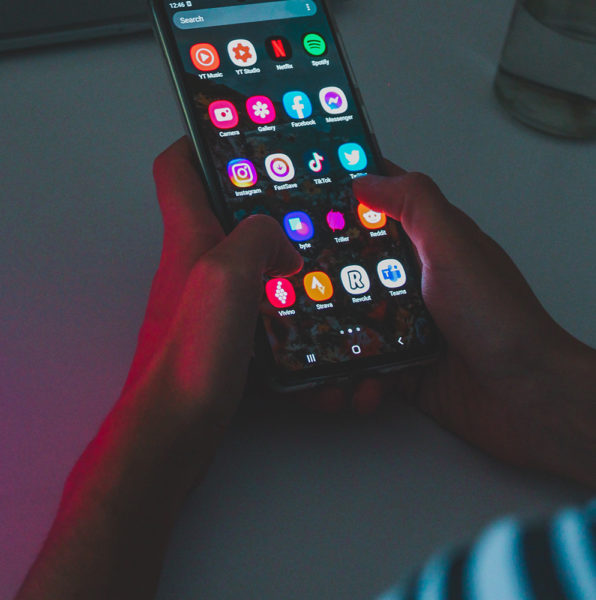
How can I participate in Microscope Me Up if I wanted to?
Di Ponzio: You can easily reach out to us via direct message on Instagram or Twitter or via email. If you live where we live, in Liverpool or Heidelberg, we are always up for a coffee. We are happy to connect if you want to share a microscopy picture with us, realize a makeup look or are interested in a live event.
